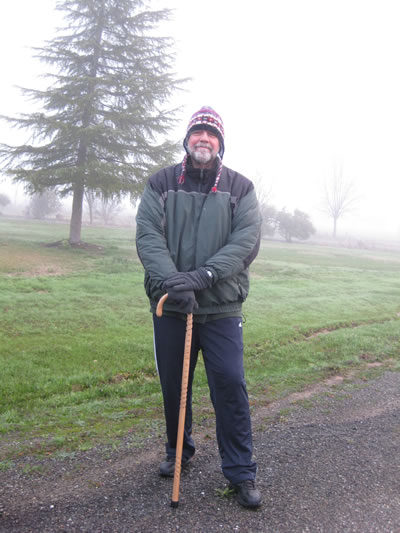Eighty Eight Ways of Walking, Walking Exercises, Walking Meditation Techniques by Michael P. Garofalo (original) (raw)
The Ways of Walking Cloud Hands Blog Walking Meditation
� Green Way Research, Valley Spirit Center, Red Bluff, California, 2012
All photographs are of Michael P. Garofalo
EightyEight Ways of Walking By Michael P. Garofalo
Index
3. Muscle Tendon Transformation Qigong Exercises
4. Chanting Cadence While Walking
6. Magic Pearl Qigong adapted for Walking
1. Walk with a Cane
Consider carrying acane or walking stickwhen you take your walk. A simple wooden crook neck cane,sized correctly for walking, is easy topurchase. Carrying and using a cane properly while walking is legal in most areas and locations in the world.
The purpose of carrying a cane or walking stick while walking is threefold. First, you can do various exercises with the cane while walking to improve your strength and flexibility in your shoulders and arms. Second, if the terrain is rough or slippery, you can improve your footing by using a cane or walking stick; and, this is useful when hiking in the mountains, along riverbeds, or in rocky areas. Third, you can use your cane to brandish against or defend yourself against animals or evil doers.
Acaneused for walking is usually a few inches longer that one used to support your bodyweight when you are recovering from injury, coping with infirmities, or when a person is weak from chronic illness or old age. Experiment a bit to find the right size for a cane to use to match your stride while you are walking briskly.
There are many exercises, drills, practice sets, and martial arts forms that make use of a cane, walking stick, or short staff. I have provided a complete guide to this subject on my comprehensive webpage titled The Way of the Short Staff.
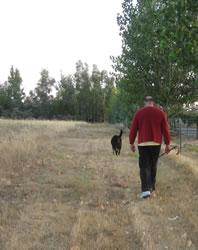
2. Read About Walking
Ideas, images, and stories can fill the mind with the passion to walk. Information about the health benefits of walking can help to get you out and walking. Tales of interesting walking adventures can motivate you to plan for some long walks. Trail guides can excite you about taking a challenging hike. Descriptions and historical facts about city walks can draw you out on the sidewalks. The mind is a very powerful force in making you want to walk more.
Take a look at some of the manyquotations I have collected about walking, and read a few of the many valuablebooks on the subject. The subject of Walking Meditation may be worth exploring.
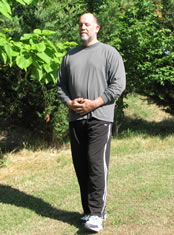
3. Muscle Tendon Transformation Qigong Exercises
I practice and teachChinese health exercises(Qigong, Chi Kung, Daoyin). One particular set, theMuscle-Tendon Transformation Classic (Yi Jin Jing Qigong), is well over a thousand years old, and is popular with Shaolin Temple monks. I have prepared awebpage on the subject of the Yi Jin Jing, and have described aset of exercisesthat can be done while walking and using a cane. You might enjoy doing these Muscle-Tendon Changing Exercises while walking.
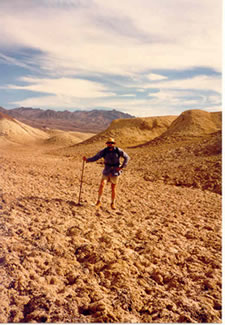
4. Chanting Cadence Walking Technique
Soldiers, when marching, build camaraderie by repeating a phrase called out by a Caller in the group. The singing/chanting,cadence songs, help the group keep a steady pace. Children playing skip rope or clapping often use cadence songs.
While walking, you might practice reciting your mantram, reciting a verse of a favorite scripture, or reciting some inspiring sentence. Choose a specific phrase and find a way to make that phrase work while using it in a cadence song manner.
Most songs in 4/4 time work quite well for cadence walking.
I usually repeat the chosen phrase very quietly or silently.
RF � Right Foot Comes Down, LF = Left Foot Comes Down
Smiling Kindness Healing Me
R L R L R L R L
repeat
Druga (Lakshmi, Devi, Shakti, Goddess) Loves Me This I Know
Lakshmi Helps Me This I Know
R L R L R L R L
repeat
Om Mane Padme Om
R L R L R L R L
repeat
Phrase ? ...... / You're right
Phrase ? ...... / You're right
Phrase ? ...... / You're right
Phrase ? ...... / You're right
Sound off! / 1,2
Sound off! / 3,4
Cadence count! / 1,2,3,4,1,2...3,4!
repeat
The possibilities are endless. Be Creative!
For a discussion of the spiritual practice of mantram recitation see:
Meditation: A Simple Eight Point Program for Translating Spiritual Ideals into Daily Life. By Eknath Easwaran (1909-1999). Nilgiri Press, 2nd Edition, 1991. 252 pages.
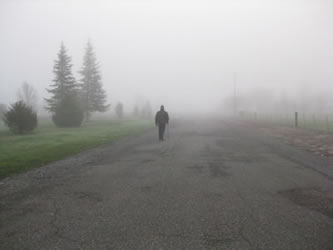
5. Listen to Lectures
I used an audio-tape playback unit with Dolby for decades to listen to lectures and music as I walked. But, times have changed for the better. The invention, manufacturing, and retail sales of small electronic devices to play digital recordings is a great advance for walkers. For the last five years, I have been using the Creative MP3 players and my favorite is the Creative MuVo v100 2GB MP3 Player. These Creative units come with Creative Media Source software that enables you to take an audio CD that you own and convert or �burn� the tracks on the CD into tracts in the MP3 format. I know that many people use I Pods or their new cell phones to store digital recordings for the playback of MP3 recordings and many other uses. These playback units are light, trouble free, have fast track selection and control options, and produce high quality audio output.
I take my favorite lectures on CD and covert the tracts to the MP3 format, or download MP3 albums or tracts from vendors, and then load the tracks onto my Creative MP3 player. You can change filenames and manipulate in Windows so that playback of tracts follows the order you want.
Plug in some good quality earphones or earplugs and you are ready to walk and listen to an audio recording of a lecture. I prefer earphones with a volume control slide switch in the cord to the headphones.
Few of us can afford the expense of going to a distant retreat center or university to listen to master lecturers, professors, and experts; but many of us can afford to purchase recorded lectures in the MP3 format and then listen to the same master speakers and lecturers in our homes or as we take our long walks.
There are thousands of recorded lectures, workshop presentations, sermons, readings, language learning, and inspirational speeches in audio CD or MP3 or audiotape format. Every subject imaginable is available. Expand your horizons, learn from the great teachers, be inspired, acquire knowledge, improve your skills - all while to take your daily walk.
This weekend (2/14/2010), for example, I am beginning to listen toAllan Watts' Out of Your Mind. Essential Listening from the Allan Watts Radio Archives of over 100 radio broadcasts in MP3 format, @ $17.98.
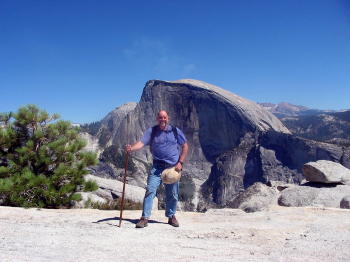
6. Magic Pearl Qigong Adapted for Walking
It would be quite easy to adapt walking with a cane and performing the exercises of the Magic Pearl Qigong while you are walking. I do this quite regularly as a take my long morning walks.
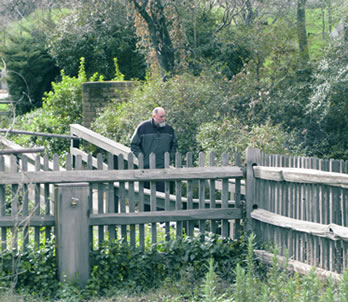
7. Walking Around the Mind
I usually leave my home at around 5:15 am to begin my morning walk in the summer months. It is cool, quiet, and the air is sweet and clear in the early morning hours. I walk about 3.6 miles. A good portion of my walk is at an unhurried, easy, and steady pace. I use some of my walking time for meditative or spiritual practices (Sadhana). Just the walk itself is a spiritual practice.
Before I begin my walk, I use aCalling the Quarters ritual for honoring and acknowledging the sacred space of my environment.
Enjoy your walk as if you were drinking water when you are thirsty, or eating a plum when you are hungry, or making love when lust overcomes you.
Today, when you walk, try the following imaginative exercise. Some might call it a contemplative exercise or meditative practice.
Keep your eyes open so as to walk safely, but don't focus or stare at particular objects.
Imagine what you look like from above if you were in a balloon at various altitudes looking down at yourself walking on the earth.
Imagine what you look like from below and in front of you if you were a small animal or insect seeing you approaching them.
Imagine what you look like from the sides as you walk along. Vary the distance from you as a walker and the imaginative person or animal looking at you.
Imagine what you look like from behind as you walk away from the viewer. What does your backside look like from 10 meters, 100 meters?
Imagine what you would look like walking in a different season of the year? We are imbedded in the context of the world, other things, the ground, our place, the season, in the sunlight - and we are seen walking in such contexts.
Imagine looking within your body and seeing your heart beating, blood flowing through your arteries and veins, your lungs rising and falling, your muscles contracting and relaxing.
If the imaginative "viewer" were at a great distance, could "It" even see you moving?
Draw your attention to how your walking body would look from various angles and distances. As you shift your viewing perspectives, does your mind change?
Imagine yourself as a viewer, witness, and observer removed from your body.
Who is the "self" that can imagine in this manner? Is it your ordinary mind, your ego, your social self, an outpouring of your material essence; or, is the "It" or the "That" which is self-aware that is something more profound, more expansive, more miraculous? Are "you" doing the imagining? Is it the vast interdependent matrix of beings that can imagine, reflect, witness itself?
Play with these questions and ideas. Mull over them. Smile. Walk on.
"According to most of the great Eastern spiritual traditions, our inner awareness/energy, or consciousness, is actually a limited, contracted form of the great Awareness/energy that underlies, creates, and sustains all things. The Upanishads call it Brahman, the Vastness. The sages of Kashmir Shaivism call it Chiti (Universal Consciousness), Paramashiva (Supreme Auspiciousness), Parama Chaitanya (supreme Consciousness), or Paramatma (supereme Self). The great Shaivite philospher Abhinavagupta called it Hridaya, the Heart. Physicists today call it the quantum field. In Buddhism it is called the Dharmakaya, the "body" of Truth."
- Sally Kempton, Meditation for the Love of It, p. 31.
"Wherever you are is the entry point."
8. New Idea
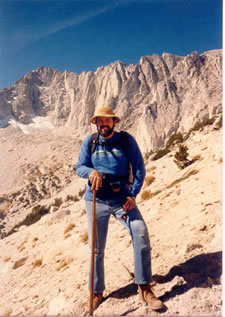
9. New Idea
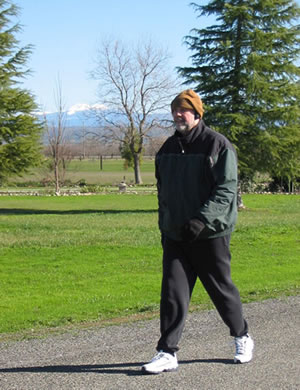
10. New Idea
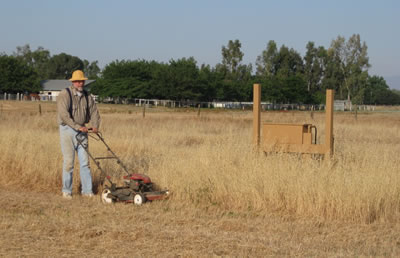
11. New Idea
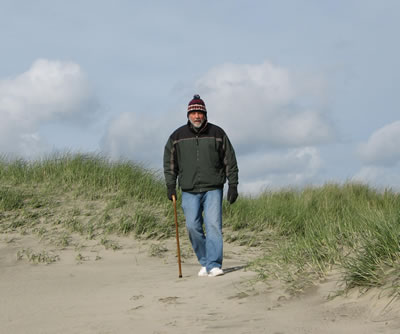
Oregon Coast, South Beach State Park, 2010
Valley Spirit Taijiquan and Qigong, Red Bluff, CaliforniaThis webpage was first distributed online on January 2012.
This webpage was last updated or modified on July 1, 2012.
� Michael P. Garofalo, 2012, All Rights Reserved
Brief Biography of Michael P. Garofalo, M.S.
Qigong (Daoist Health Practices): Guides, Bibliographies, Lessons
